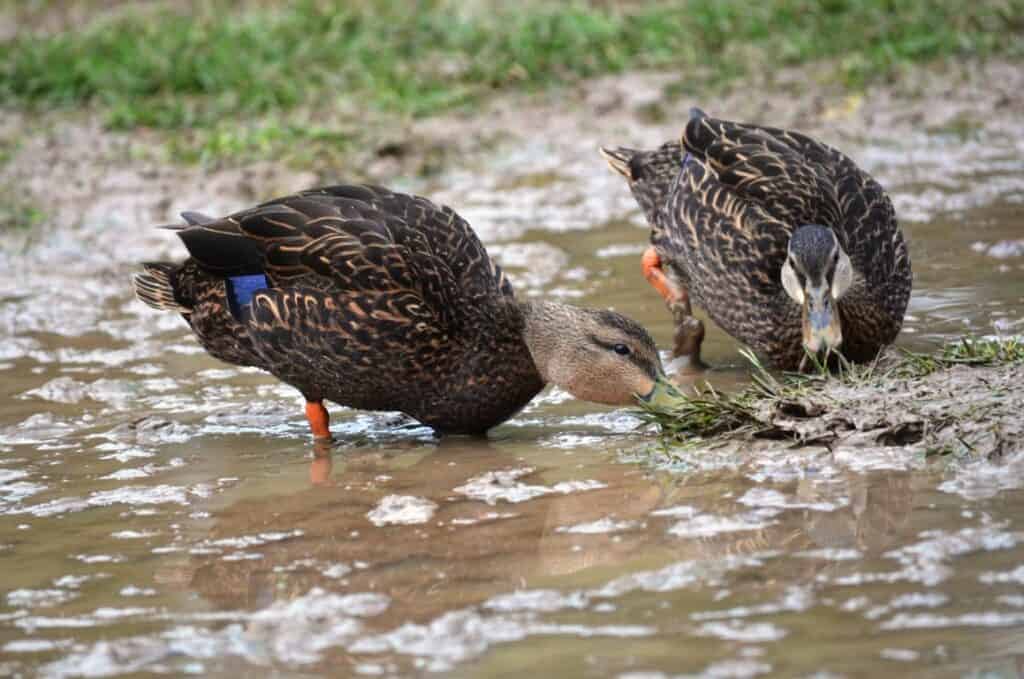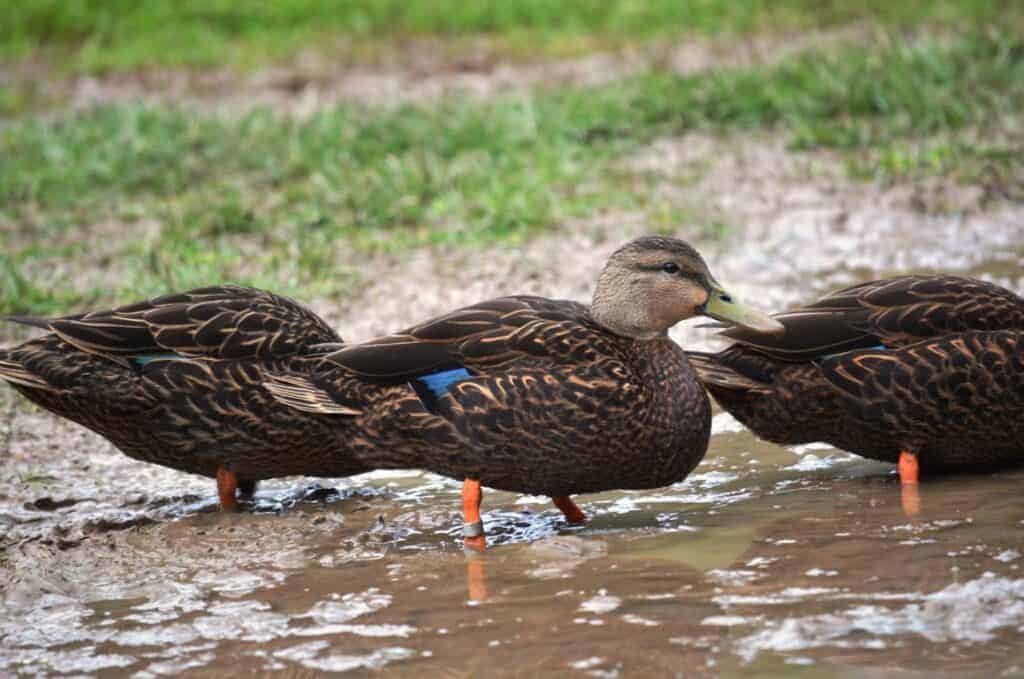Mottled Duck

Mottled Ducks can be found on the Gulf of Mexico coast between Alabama and Tamaulipas (Mexico) and Florida. Favouring shallow freshwater wetlands including marshes, they will use natural and man-made areas of water. Their principle diet is seeds, vegetation and insects.
There are two subspecies recognised:
- Florida Mottled Duck A. f. fulvigula of Florida
- Gulf Mottled Duck A. f. maculosa between Louisiana and north-east Mexico
Anas fulvigula
The Mottled Duck is not too distantly related to the Mallard Anas platyrhynchos. With a sturdy body, short neck and tail and relatively long bill, at first glance, both sexes resemble a female Mallard.
A closer study reveals the richer, darker browns. Indeed its Latin species name fulvigula refers to its reddish-brown throat. Their faces and throat tend to be more buffy fawn than Mallards’ and lack the fine graining; drakes often have the appearance of wearing a pale hood. A pure Mottled Duck has a dark tail. Any white in the tail suggests that there are some Mallard genes present. Adult drakes have a striking yellowish bill with a noticeable dark area at the gape. Females have subtler bills, tending towards dirty orange or green with some darker areas.

One key identification factor is the border of the speculum, or mirror. The leading edge has no white bar outside the black, though there may be a grubby white band outside the black on the trailing edge. This is quite noticeable in flight, along with obvious white underwings.
Hybridisation with wild Mallard happens regularly and poses some conservation issues. The American Black Duck also interbreeds; identification of these hybrids is very challenging.
With a long breeding season in the wild subtropical conditions, the Mottled Duck has little need to stray far. From January to August, nesting is reasonably adaptable. They would present little challenge to a breeder, but few are kept in captivity. Presumably their similarity to close relatives and plain appearance affects their desirability.
Once incubation starts, the drake abandons his mate and joins other males on the moulting grounds. 6 to 12 slightly glossy pale eggs are incubated by the duck alone for 26–28 days.
Share this page